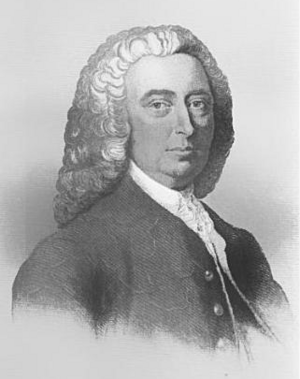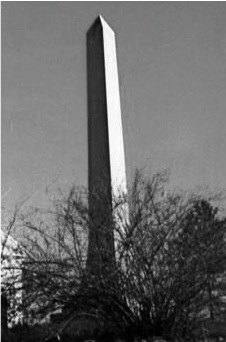Arthur Noble facts for kids
Quick facts for kids
Lt. Col. Arthur Noble
|
|
|---|---|

Arthur Noble
|
|
| Born | 1695 Enniskillen, Ireland |
| Died | February 11, 1747 Grand-Pré, Nova Scotia |
| Allegiance | |
| Service/ |
Massachusetts Bay colonial militia |
| Years of service | c.1725—1747 |
| Rank | Lieutenant colonel commissioned Feb. 5, 1744 |
| Commands held |
|
| Battles/wars | |
Arthur Noble (born around 1695 – died February 11, 1747) was an important military leader. He was a lieutenant colonel in the local army of the British Province of Massachusetts Bay. He is most famous for his actions in Nova Scotia during King George's War. This war was a big conflict in North America. Arthur Noble was killed during the Battle of Grand Pré.
Who Was Arthur Noble?
Arthur Noble was born in Enniskillen, Ireland. Around 1720, he moved to Boston, Massachusetts. He came with the Lithgow family. He was good friends with Robert Lithgow.
Both Noble and Lithgow joined the local army, called the colonial militia. They helped protect the area from attacks. These attacks came from French forces and Native American groups. They fought along Casco Bay and the Kennebec River. This was during King George's War and other conflicts. On December 14, 1725, Arthur Noble married Sarah Macklin.
Fighting at Louisbourg
Arthur Noble became a lieutenant-colonel in Col. Waldo's Regiment. This group was formed for a special mission. Their goal was to capture the Fortress of Louisbourg. This fort was one of the strongest in New France.
The New England colonies quickly gathered 4,300 men. This was for the Louisbourg mission. Waldo became a brigadier-general. He put about a quarter of his soldiers under Colonel Noble's command. The Fortress of Louisbourg fell on June 17, 1745. This made the French worried they might lose all of Canada.
The Battle of Grand Pré
In November 1746, Noble traveled to Georgetown. He was going on a mission against the King's enemies. He served at Fort Richmond (Maine). Before this, he wrote his last will. In it, he left his property to his brothers, Francis and James. He also left it to his daughter, Sarah, and his son, Arthur II. He had a lot of money and property.
After Louisbourg was captured, the stage was set for the Battle of Minas. French troops arrived in the Minas Basin. This is at the top of the Bay of Fundy. They set up camp at Beaubassin. The Governor of Nova Scotia, Major General Paul Mascarene, worried about Grand-Pré. He thought it might be attacked.
So, he asked Governor William Shirley of Massachusetts for more soldiers. He wanted to drive away the French troops. He also wanted to show that the British were in charge. Governor Shirley agreed to send 500 more soldiers. These soldiers were split into two groups of 250 men.
The first group arrived on December 24, 1746. It was led by Captain Morris. The second group, led by Noble, arrived a month later. The soldiers stayed in 24 houses in Grand-Pré. They felt safe during the winter. They did not take many safety steps.
French spies learned about these new soldiers. Nicolas Antoine II Coulon de Villiers was chosen to attack Morris and Noble's men first. The French Canadian force had 600 soldiers. They were divided into ten groups. Each group had 28 Canadians and some Native American allies. Coulon's own group had 75 men. The French army was about a mile and a half away. Coulon knew exactly where the New England troops were.
At two in the morning on February 11, 1747, the French army left their camp. They marched through snow that was four feet deep in some places. A very bad storm was happening that night. It was so stormy that many New England soldiers thought an attack was impossible. So, they were not keeping a close watch.
At three in the morning, the French army reached the attack spot. Because of the heavy snow, they were not seen until they were very close. Despite the storm, their guides led the French Canadian army right to the houses. These were the houses where the English soldiers were staying.
Some shots were fired to warn others. But Coulon's attack was very fast. The doors of the houses were easily forced open. Noble's soldiers were surprised in their beds. Colonel Noble was killed early in the fight. He was shot in the forehead. Coulon was also shot in his left arm. He lost a lot of blood and had to give his command to the chevalier de La Corne. Coulon never got better from his wound. He died later from problems after surgery.
The New England men tried to fight back, but it was not enough. The attack stopped at five in the morning. The French Canadian surprise attack was very successful. Six officers, including all of the Noble brothers, were killed. Seventy of their men were also killed. Sixty were wounded, and 54 were taken prisoner. The French had only six Canadians killed and fourteen wounded.
At daylight, La Corne sent a message. He asked for an English surgeon to help one of their badly wounded captains. The French surgeon was not there. This request allowed prisoners to be set free. Fighting stopped until the surgeon returned. A truce was suggested at nine o'clock.
The English soldiers were not ready for the harsh winter. They did not even have snowshoes. So, they could not move forward. The French were also very tired. They did not try to attack again. If the New England troops had been used to fighting in such conditions, they might have won. But they were stuck and could not move. So, the truce was accepted.
Arthur Noble's Legacy
Arthur Noble and his youngest brother, James, owned land. This land was in the Walpole Settlement. It was a small area with about thirty men. Arthur's son, Arthur II, inherited most of the land. He named part of the settlement Nobleborough. This was to honor his father and uncles. They had died in the Louisbourg Expedition or at Grand Pré.
The American Irish Historical Society honored Arthur and James Noble. They said these two brothers were very brave soldiers. They fought for their new country.
Arthur Noble had three children who survived him:
- Sarah (born 1726), who married William Lithgow.
- Lt. James (born 1728), who died at eighteen from a serious fever.
- Arthur II (born 1737), who married Mary Goffe.
- He is also the namesake of Fort Noble, Phippsburg, Maine (1734 - unknown).


